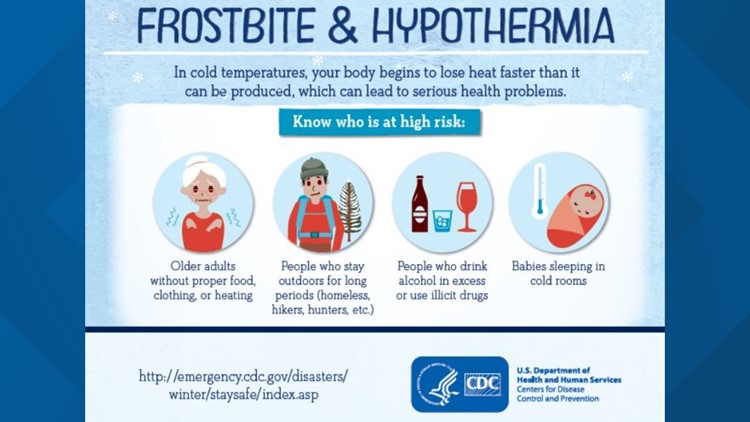DALLAS — Whether you are stuck in the cold without heat at home or choosing to play in the snow outside, we all need to be aware of the very real dangers of hypothermia and frostbite.
Invasive cardiologist Fahmi Farah distinguishes between the two and offers helpful guides for those experiencing extreme cold.
What is frostbite?
Frostbite is an injury to the skin and underlying tissue caused by freezing temperatures.
Frostbite symptoms:
Frostbite symptoms include cold skin with sharp pain, numbness, skin discoloration (red, white, blue, and gray) joint and muscle stiffness, blistering after rewarming.
Most commons areas in your body could experience frostbite:
Fingers, toes, nose, ears, cheeks, and chin.
What are the differences between the two kinds of frostbite — superficial and deep?
Superficial frostbite includes redness of the skin that burns upon rewarming.
Deep frostbite affects all layers of the skin and the tissue underneath, blue-gray skin with numbness and large blisters can form upon rewarming.
What is hypothermia?
Hypothermia occurs when the body temperature falls below 95 degrees. It can be caused by prolonged exposure to cold weather.
How serious is it?
Hypothermia is a medical emergency because the body loses heat faster than it can generate it.
Hypothermia prevents the heart, nervous system, and other vital organs from functioning properly — and if left untreated, it can lead to complete heart and respiratory failure and death.
As of Tuesday morning, MedStar had treated 44 patients for hypothermia.
You should seek immediate medical attention if there are any signs of frostbite or hypothermia.



